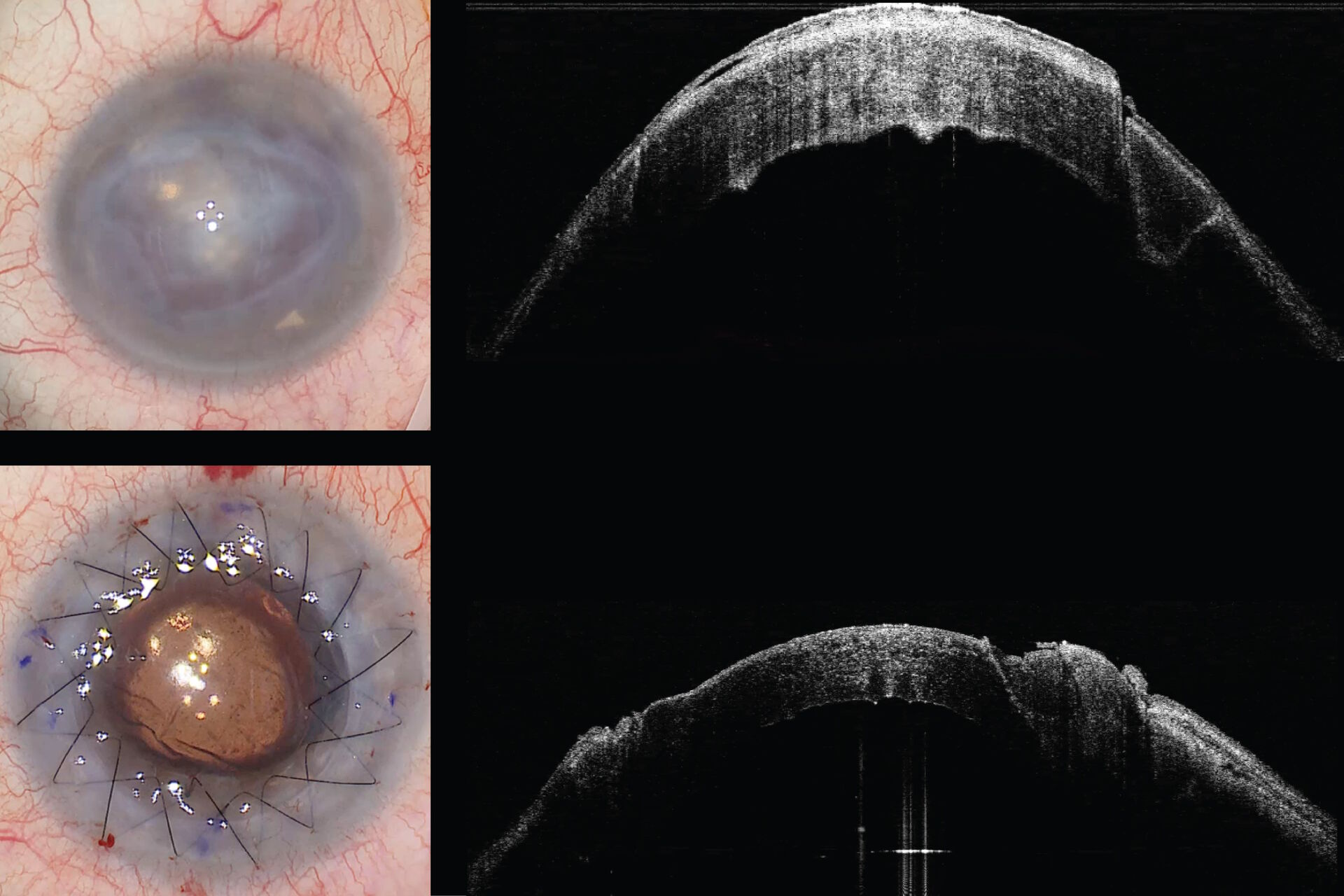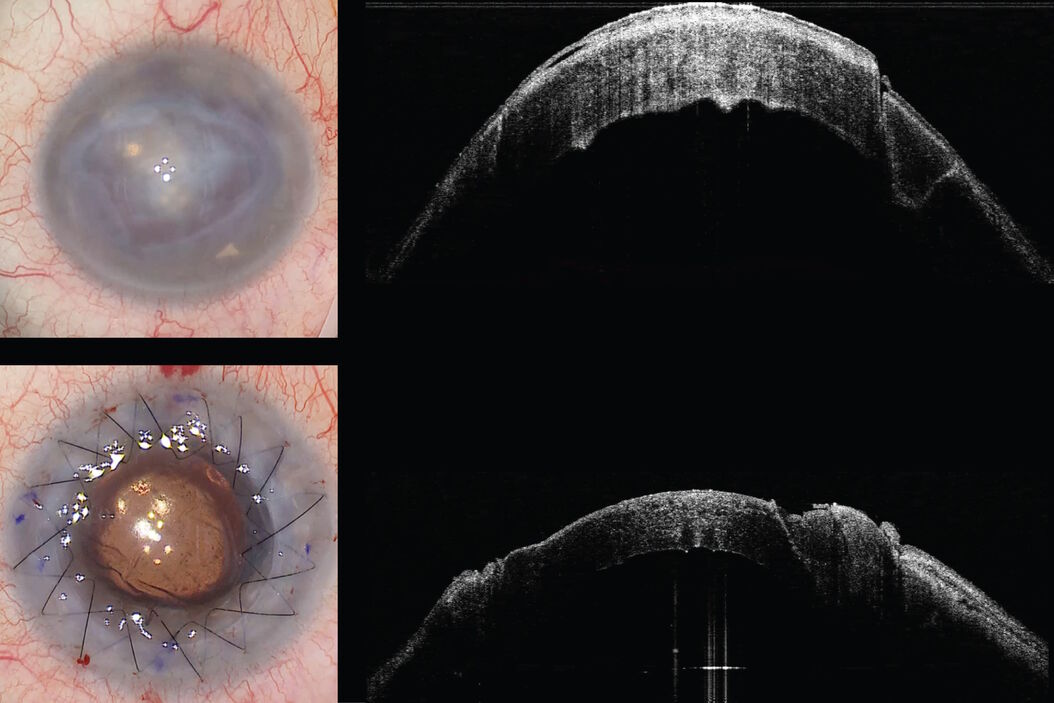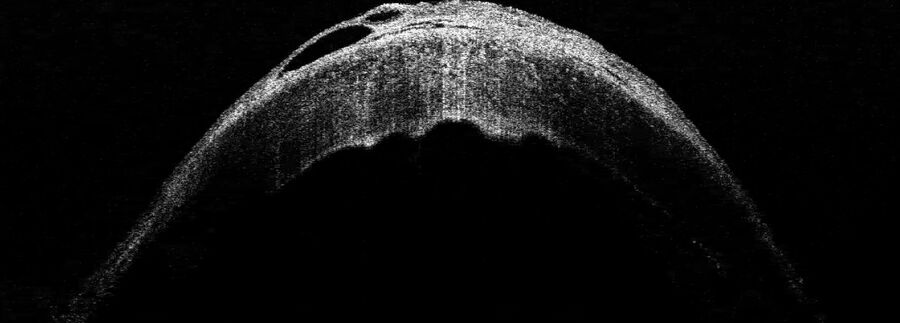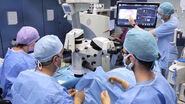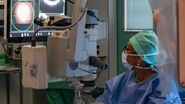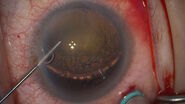The use of intraoperative optical coherence tomography (OCT) provides anterior segment surgeons with enhanced visualization during corneal transplantation contributing to better results and increased safety. Prof. Nikolaos Bechrakis demonstrates its value through three clinical cases.
First Clinical Case: Bullous Keratopathy
In this clinical case, the patient had an extremely pathologic cornea, with the epithelium showing bullous keratopathy and a very irregular posterior surface of the cornea. The image from the EnFocus intraoperative OCT indicated the area where previous surgery had been performed on the cornea and where the cornea was trephined for the new keratoplasty.
The intraoperative OCT showed how the viscoelastic was filling the anterior chamber. It allowed Prof. Bechrakis to see exactly where the previous scars were to avoid the area where the previous trephination had occurred.
Continue Reading
Learn more about this case and discover two more corneal transplantation cases.
Enter your information to download the full case study.
Please note that off-label uses of products may be discussed. Please check with regulatory affairs for cleared indications for use in your region. The statements of the healthcare professionals included in this clinical case reflect only their opinion and personal experience and not those of Leica Microsystems. They also do not necessarily reflect the opinion of any institution with whom they are affiliated.
